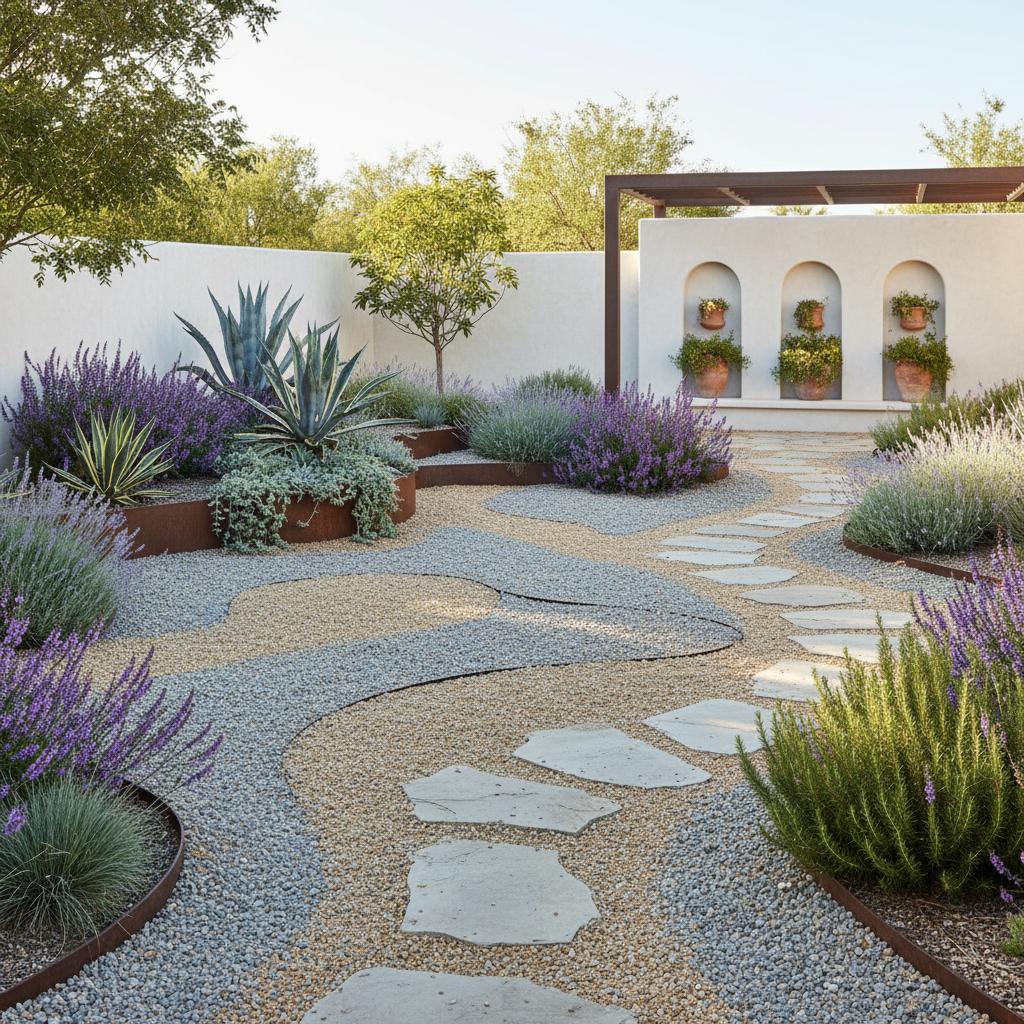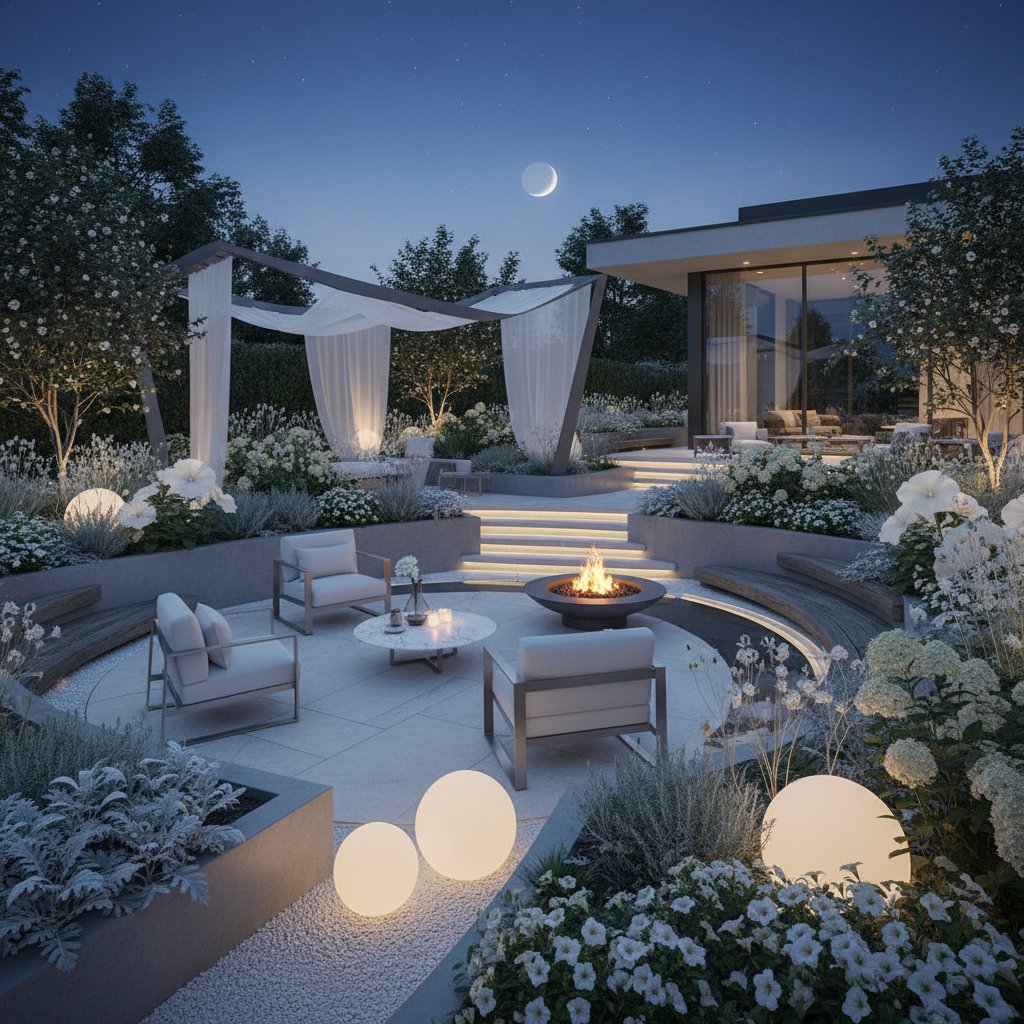Transform Your Yard into a Moonlit Sanctuary
A garden that glows after dark offers tranquility and allure. Select appropriate plants, lighting, and arrangements to convert your outdoor space into a serene haven, equally captivating under moonlight as in daylight. Moonlit gardens emphasize pale hues, gentle textures, and delicate aromas that intensify in the evening. Implement modest, deliberate adjustments to alter the nighttime ambiance of your yard without extensive overhaul.
Grasping the Essence of a Moonlit Garden
Design a moonlit garden for appreciation post-sunset. Incorporate vegetation and surfaces that capture ambient light or release scents as temperatures drop. Pale blooms, silver-toned leaves, and lustrous foliage become prominent in dim conditions. Position these elements along paths or near seating to harness even minimal lunar illumination.
Such gardens engage multiple senses. Night-blooming species intensify their fragrances at dusk to draw pollinators including moths. The evening atmosphere grows cooler and hushed, establishing a subtle, rhythmic serenity.
Selecting Ideal Night-Blooming Plants
Chosen plants form the foundation and personality of your moonlit garden. Prioritize species that flower after dusk or feature light-reflecting foliage.
Recommended night-blooming options include:
- Moonflower (Ipomoea alba): Expansive white flowers unfurl at twilight and furl by morning. Train them on arbors or railings; they emit a mild perfume.
- Evening primrose: Resilient with lemon-yellow blossoms that appear luminous in shadows. It propagates readily and summons nocturnal insects for pollination.
- Night phlox: Bunches of white or roseate flowers bearing a honeyed aroma. Suitable for containers or edging.
- Angel's trumpet: Pendulous blooms with potent scent. Develops as a compact bush serving as a bold centerpiece.
- White nicotiana: Slender stalks topped with flared white petals exuding robust evening fragrance.
Pair these with silvery perennials such as lamb's ear, dusty miller, or artemisia. Their velvety, light-bouncing surfaces provide contrast and illumination, particularly when blossoms rest.
To plant effectively, prepare soil with compost for drainage. Space moonflowers 12 inches apart on supports; sow evening primrose seeds directly in fall for spring emergence. Water newly planted specimens deeply once weekly until established.
Designing the Garden Layout
Structure your moonlit garden to direct vision and movement. Consider evening navigation through the space. Ensure pathways remain visible and navigable. Arrange seating for comfort and optimal exposure to moonlight or ambient illumination.
Identify primary observation areas, such as patios, verandas, or viewing windows used in the evenings. Site the most luminous or aromatic plants proximate to these zones. Layer vegetation for dimension: position lofty shrubs rearward and compact blooms foreground.
For water elements like ponds or cascades, align them to mirror moonlight. Rippling surfaces introduce sparkle and subtle audio, fostering repose.
Sketch a simple plan on graph paper, marking existing features. Allocate 3 to 5 feet for main paths using stepping stones or decomposed granite for traction.
Enhancing with Strategic Lighting
Supplement natural light with artificial sources applied judiciously. Aim for diffused radiance rather than harsh beams. Opt for warm-toned LEDs to mimic moonlight.
Effective lighting strategies encompass:
- Pathway illuminators: Ground-level units delineating trail borders. Solar models install effortlessly without electrical connections.
- Uplights: Compact beams directed skyward to accentuate arboreal forms or vertical planes. They produce intriguing shadows and emphasis.
- String strands: Draped across branches or perimeters for understated festivity.
- Portable lanterns: Ideal for terraces and surfaces. Select flameless variants for security.
Restrict illumination to key zones. Excess brightness diminishes the ethereal quality defining moonlit gardens.
Install solar path lights by embedding stakes 6 inches into soil; position uplights 2 to 3 feet from focal points. Test placements during twilight for balanced coverage.
Budgeting and Implementation Effort
Expenses for a moonlit garden fluctuate with yard scale and selections. Initiate modestly and expand gradually.
Approximate expenditures involve:
- Plants: $5 to $25 per unit, varying by maturity and variety
- Lighting: $15 to $100 per piece, based on design and energy type
- Mulch or aggregate: $5 to $10 per sack
- Accents like vessels or benches: $50 minimum
Perform planting and assembly personally to control spending. Engage professionals for landscape design or electrical work to enhance efficiency and compliance.
Source plants from local nurseries during sales; compare solar lighting prices online for savings. Total for a 200-square-foot area might range from $200 to $800.
Upkeep and Seasonal Adjustments
Moonlit gardens demand routine care akin to standard landscapes, with targeted practices for peak performance.
- Prune periodically to stimulate fresh flowering and preserve form.
- Remove faded blooms to promote ongoing production.
- Irrigate during evenings to allow overnight absorption without daytime loss.
- Inspect light units biweekly: wipe covers and swap faded elements.
- Renew ground cover annually to suppress weeds and define edges.
In frosty climates, relocate container plants inside or shield sensitive types with frost cloth. Mulch roots in autumn to insulate against freezes.
Infusing Texture and Auditory Elements
Textures and sounds enrich the moonlit experience. Select organic materials that interact softly with breezes or moisture. Gravel trails yield gentle crunch. Flowing grasses undulate with whispers. Timber or cane barriers muffle echoes, enclosing the area in calm.
Incorporate chimes or modest cascades for persistent, soothing resonance. These features deepen immersion and screen urban din.
Lay 2-inch gravel layers over landscape fabric for paths; plant grasses in clusters for natural sway. Tune chimes to low tones for subtlety.
Tailoring to Your Preferences
Adapt your moonlit garden to personal taste. Favor untamed informality or precise geometry. Ensure nighttime appeal remains central. Integrate furnishings matching your aesthetic: a rustic seat, suspended lounger, or compact dining set. Choose weather-resistant fabrics and metals.
Blend aromas for desired ambiance. Jasmine, lavender, and gardenia harmonize, layering scents. Site them adjacent to gathering spots for guest enjoyment.
Experiment with color accents: add pale blue salvia for cool tones or soft pink datura for warmth. Adjust based on evening observations.
Savoring the Nocturnal Transformation
With establishment complete, immerse in your moonlit creation. Venture out post-dusk to observe light dancing on foliage and flowers. The scene evolves nightly: petals unfurl and retreat, fragrances wax and wane, hues alter with lunar cycles.
Consistent tending and balanced elements yield a vibrant after-dark sanctuary. This garden encourages pause and attentiveness. Evenings reveal fresh vistas, each illuminated uniquely in the serene glow.



